A wide range of sports equipment for fans of extreme recreation poses the problem of choice: what to prefer - a skateboard or a longboard. Let's try to figure out what their main differences are, and which of them is better suited.

History of occurrence
Skateboarding as a sport originated in California. In the 50s of the twentieth century, some of the fans of surfing in the protracted periods of the absence of waves came up with the idea that you can ride on the board on land. As a result, after some experiments to strengthen the wheels, a skateboard appeared on the board. The small boards on wheels, allowing you to perform stunts and glide overland like on the ocean waves, soon won the love of local residents, and then spread around the world.
At first, a skateboard was used only as a means of transportation - to get to school, to the beach. This did not require special skill, it was only necessary to maintain balance.
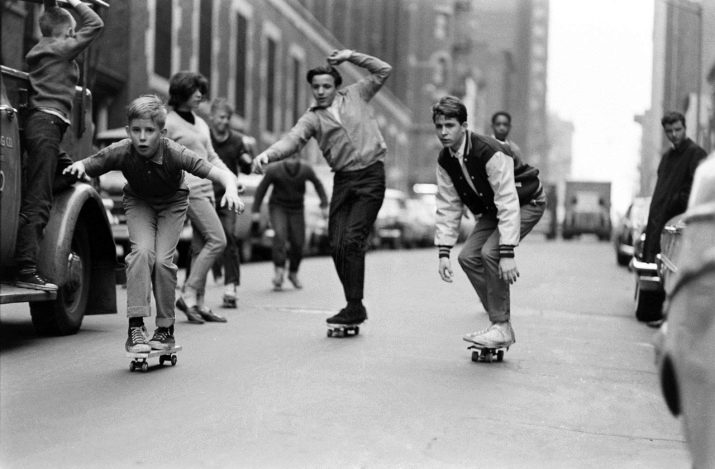
However, to improve maneuverability and glide over long distances, boards needed to be lengthened. So there was a longboard - a kind of skateboard.
Longboards are more versatile - they gain speed faster and, due to greater inertia, smooth out road surface defects. Therefore, they are suitable not only for perfectly smooth asphalt, but also for such roads where an ordinary skate loses its maneuverability.

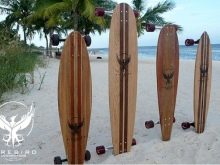
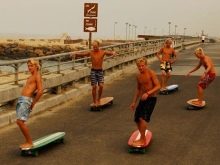
Since 1959, skateboards began to be produced on an industrial scale, and by the mid-60s, skateboards reached the pinnacle of popularity. Makaha, a skateboard company, has sold over 59 million boards in 3 years. Since the beginning of the 70s, the design of skateboards and materials for wheels, decks and suspensions began to improve.Professional skateboarders appeared, magazines dedicated to skateboarding began to be published, video products were produced - training and advertising this sport.
To skateboarding lovers do not depend on the vagaries of the weather, indoor skate parks began to appear, the first of which was opened in 1976 in the state of Florida. Love for skateboards began to cover the countries of Europe - France, Germany, England. A wide range of accessories for skateboarding appears on the sports goods market - shoes, gloves, baseball caps, protection. Clothing manufacturers release entire lines of skateboarding. So, marching around the world, skateboarding from a teenage hobby turned into an entire industry.
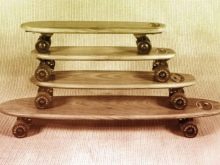
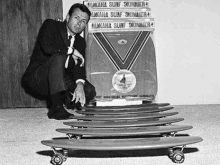

Trick skateboards came to Russia in 1989, when skateboarding equipment was presented at an exhibition in Lenexpo in Leningrad (St. Petersburg) and demonstrations by professional masters were held.
Since the beginning of the 90s, regular skateboarding competitions have been held in Russia, more and more young people are involved in the new sport, the Russian Skateboarding Federation appears, in Moscow, St. Petersburg, Saratov and a number of cities skate parks equipped with special ramps are being equipped.
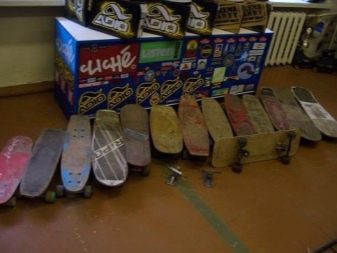
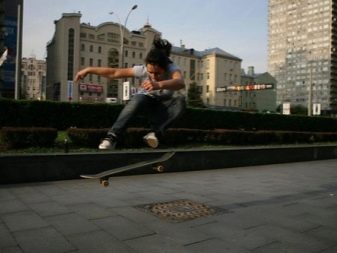
Differences in design and size
Note that a longboard differs from a skateboard not only in size but also in design.
A skateboard board is glued from maple in 7-9 layers, and its strength depends on the number of layers. The width of the deck is 18-23 cm, the length is not more than 80 cm. The quality and weight of the board also depends on the quality of the wood and manufacturing technology. The board must have sufficient flexibility to perform the tricks.
Small skateboard wheels and a small stiff suspension do not allow you to make long walks on it, especially on uneven asphalt.
Trying to ride it around the city, you will feel every pebble and pothole on the road. In addition, he does not develop great speed.
The board at the skateboard bends upward in the bow and tail. This is necessary to perform tricks, for example, flips.

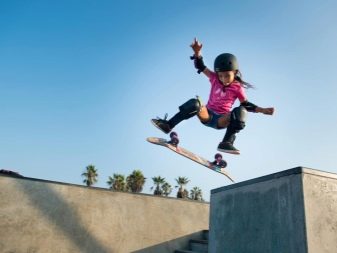
Longboard is more reminiscent of its ancestor - a surfboard, its deck is long, made of fairly soft and resilient material. The composition of the material and the shape are such that they absorb the flaws in the road, and it is also easier to gain speed.
The design of the skateboard is aimed at achieving maximum lightness. The longboard is designed in such a way as to provide maximum comfort during long trips on any surface. This is achieved by the length of the deck (up to 1-1.5 meters) and its structure, giving the desired elasticity, as well as shape. The deck can be completely straight or have a slightly raised tail. This kind of longboard is called kicktail.
Longboard wheels are larger in diameter than the skate, they can be soft or hard, can have both rounded edges and straight lines. The suspension is tall and wider than a skateboard. The longboard deck itself is also not only longer, but also wider than the skateboard.
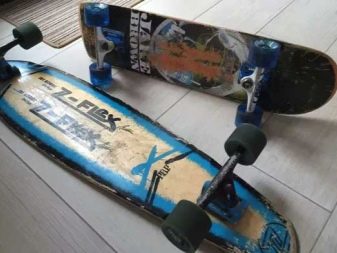
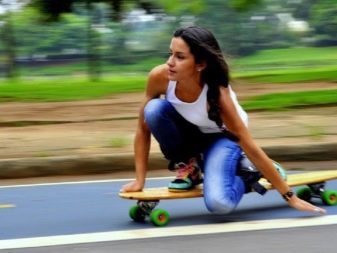
In this way, the main advantages of a longboard are the ability to develop high speed and good maneuverability. On the slopes, the longboard develops 30-35 km / h, and the stability and excellent driving performance allow even beginners to achieve success in mastering this sport. Large wheels complete with a movable high suspension provide softness and comfort in movement, even on not too smooth roads. In addition, longboards are available not only for adolescents and athletic people, but also for lovers of skiing, who are overweight, as they can withstand up to 100-110 kg.

For those who are looking for a middle ground, a hybrid of a longboard and a skateboard called a cruiser is suitable. Its suspension is stiffer than that of a longboard, but softer than the suspension of a skateboard, it allows you to perform some tricks, and also facilitates turns. Therefore, such a board is optimal for urban skating.
Cruisers are distinguished by large wide wheels, convenient for riding on uneven road surfaces, allowing you to develop high speed with maximum comfort. Qualitatively made cruisers can withstand weight up to 150 kg. The curved tail makes the cruiser adapted to perform tricks.
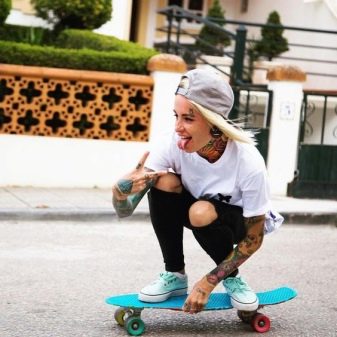

Cruisers are made of hard wood or plastic. Plastic gives the board good flexibility, but at the same time it must be very durable. Plastic cruisers have their own name - plastboards. In addition to driving performance, plastic boards provide an opportunity for a variety of designs, as they are easily painted in various colors and are suitable for drawing drawings. Plastboards are lighter and well suited for children.
The light weight and dimensions of cruisers, especially plastic ones, make them the most convenient to carry - fastened to a backpack or just in a case.

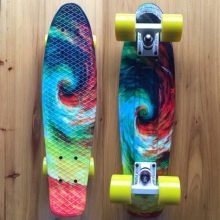

Difference in purpose
The decisive moment when choosing between a skate and a long one is to determine which riding style you prefer.
If you like to perform tricks, jumps, spin in a ramp, then your choice is a skateboard.
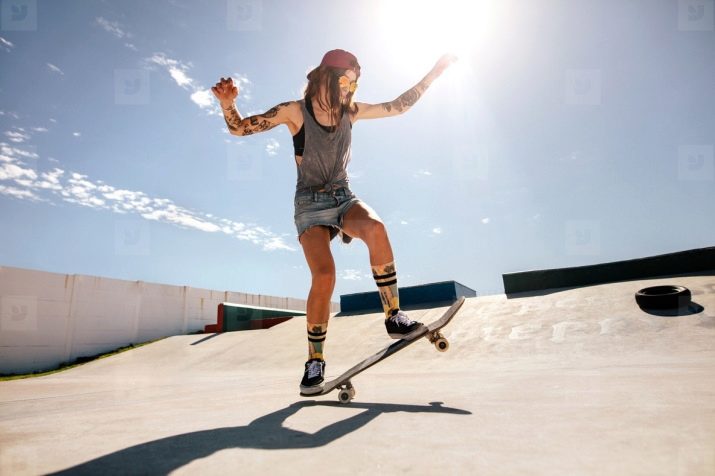
But it is not suitable for overcoming long distances, for walking and downhill skiing. For all these pleasures, you should choose a longboard. It will be comfortable to ride on asphalt roads, like a surfer in the ocean. It will provide soft gliding and ease of maneuvering, will allow you to overcome huge distances without difficulty. However, for performing tricks this is not the right tool. Although lovers of longboards invent various interesting directions in the style of skiing.

But the skateboard in its classic form with two-sided bending of the deck is best suited for various tricks, jumps and ramp rides!
A longboard with an even long deck, sometimes slightly curved in the tail. The shape of the deck depends on the destination - for slides or trips on a flat road.
The cruiser differs from the skate in a one-sided bending of the deck and a slightly larger size. The cruiser’s main purpose is to ride on city streets, however, small jumps on it can also be performed. Large wheels and not too stiff suspension allow you to achieve high speed, easy to call on obstacles and overcome bumps in the road surface.
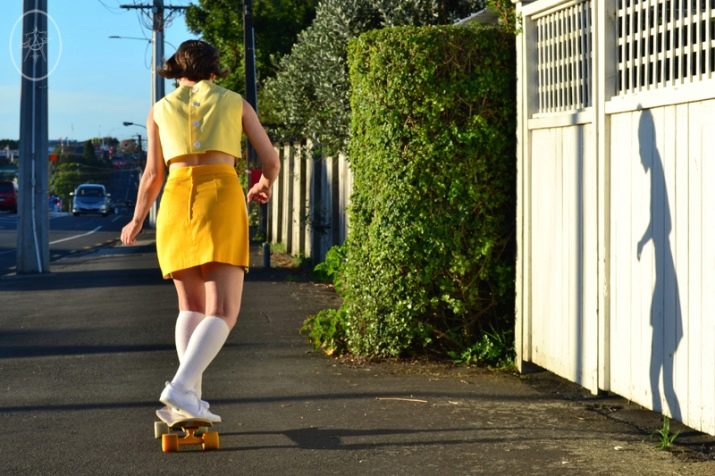
What to choose
Knowing which board is best for you will help know your preferences, age and weight.
Longboard is good for beginners, and also if you like high speeds and downhills, if you intend to ride on rough terrain, and not on specially equipped sites.
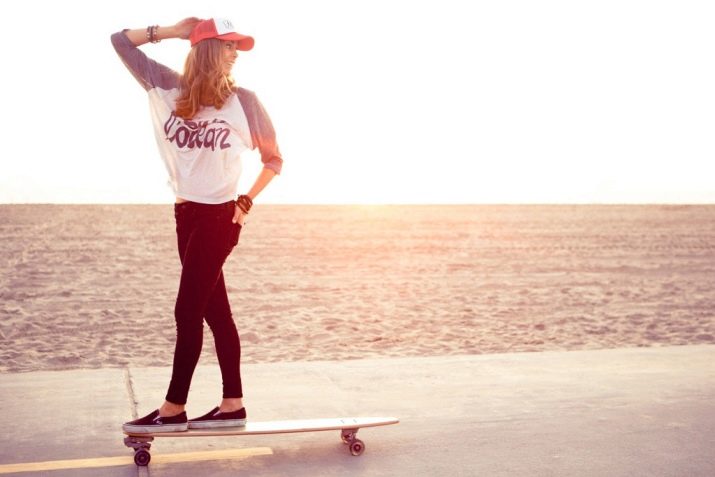
For beginners, a cruiser, such as a longboard subspecies, may also be a good choice. It is not as heavy as the original version, and is perfect for lovers of walks in the city. For a child, a cruiser is convenient as a means of transportation to and from school, which saves time, does not take up much space, and also does not require parking.

Skateboard with its lightness and jumping ability can be the next step in the development of skating skills. Having mastered simple jumps on a cruiser, when choosing the next board, you can stop on a skateboard and improve your skills, delighting yourself with the speed and other advantages of a skateboard.
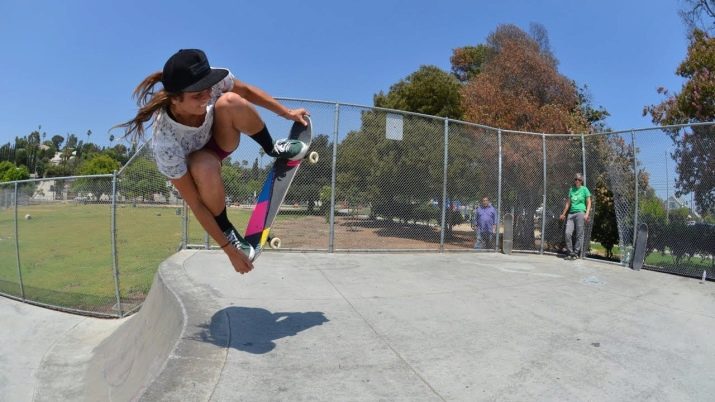
In this way, if you prefer stunt skating - on special platforms and in a ramp, opt for a skateboard; for downhill and long distances, as well as high-speed skiing, choose a longboard; Well, if you want to combine a long comfortable ride with performing simple tricks, then you should choose a cruiser.
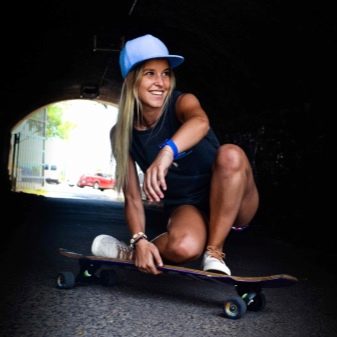
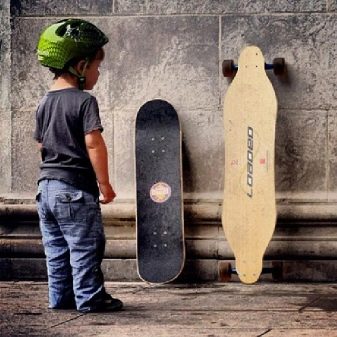
The difference between a longboard, a skateboard or a cruiser can be found in the video.










